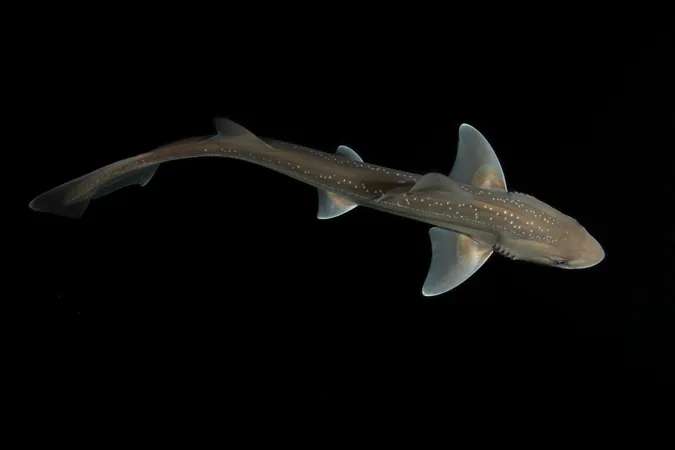
Groundbreaking Discovery: Sharks Capable of Making Sounds!
2025-03-26
Author: Wei
Introduction
In an astonishing breakthrough, scientists have observed New Zealand's rig sharks producing sounds for the first time, marking a monumental development in the field of marine biology. This finding stands as the first documented instance of active sound production in any species of shark.
Previous Research
While over a thousand fish species are recognized for their ability to communicate through sound—utilized in contexts like mating and predator defense—sharks had not been known to produce sounds voluntarily until this study. Past research showed that cartilaginous fish, including rays and sharks, could use sounds for communication and navigational purposes, but not typically for self-initiated vocalization.
The Research
The recent marvel builds on prior research, including a 2022 study that unveiled a stingray species capable of clicking sounds when approached by divers. However, the rig sharks have taken this a step further. In groundbreaking research, published in the journal Royal Society Open Science, scientists revealed that these sharks intentionally emit sharp, high-frequency clicks by forcefully snapping their flattened teeth together.
Characteristics of Rig Sharks
Rig sharks, endemic to the shallow estuaries of New Zealand and reaching lengths of up to 150 centimeters (around 5 feet), primarily feast on crabs and other small crustaceans. Larger shark species often prey on them. Preliminary findings suggest that these vigorous sounds may be a response to stress or disturbance, indicating a potential communication method.
Study Observations
During the study, researchers conducted underwater observations at New Zealand's Leigh Marine Laboratory, capturing sound recordings from ten rig sharks as they were handled in tanks. Astonishingly, these sharks produced an average of nine clicks every 20 seconds, predominantly during various body movements. Notably, about 25% of the clicks coincided with sudden movements, suggesting they may be part of a 'startle response.' In fact, around 70% of sounds were observed during calm swaying, with only 5% occurring without any significant motion.
Implications of the Discovery
This study is a pioneering observation of sharks producing sounds. The researchers stated that this opens new avenues for understanding shark behavior and communication. Nevertheless, the mystery persists: can these sharks perceive their own clicks, and what might be the broader ecological significance of these sounds?
Future Research
Scientists emphasize the necessity for further investigations to explore the mechanisms behind sound production and verify whether rig sharks can produce clicks in more natural, undisturbed environments. As the mysteries of shark communication unveil, the potential for discovering diverse behaviors among these ancient creatures continues to expand.
Conclusion
Stay tuned, as researchers promise that more groundbreaking revelations about shark behavior and communication may be just around the corner!



 Brasil (PT)
Brasil (PT)
 Canada (EN)
Canada (EN)
 Chile (ES)
Chile (ES)
 Česko (CS)
Česko (CS)
 대한민국 (KO)
대한민국 (KO)
 España (ES)
España (ES)
 France (FR)
France (FR)
 Hong Kong (EN)
Hong Kong (EN)
 Italia (IT)
Italia (IT)
 日本 (JA)
日本 (JA)
 Magyarország (HU)
Magyarország (HU)
 Norge (NO)
Norge (NO)
 Polska (PL)
Polska (PL)
 Schweiz (DE)
Schweiz (DE)
 Singapore (EN)
Singapore (EN)
 Sverige (SV)
Sverige (SV)
 Suomi (FI)
Suomi (FI)
 Türkiye (TR)
Türkiye (TR)
 الإمارات العربية المتحدة (AR)
الإمارات العربية المتحدة (AR)